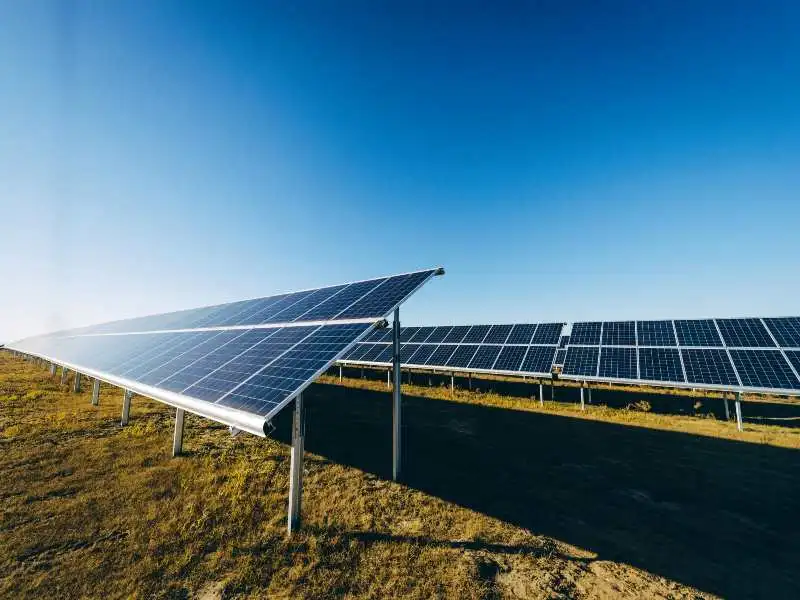Solar energy has greatly revolutionised our lives with affordable electricity supply, sustainability, and efficiency. It has also significantly reduced pollution with its minimal carbon footprint and replaced traditional fossil fuels. Solar companies play a crucial role in this sustainable growth approach by providing solar PV panels that convert sunlight into electricity and supply it to homes and businesses. But what do we do with the excess electricity we do not consume? Stay with this blog to learn about net metering and its process and learn how you can sell back the surplus electricity for some extra monetary benefits.
What Is Net Metering And Its Relation To Solar PV Panels?
Solar panels not only save you money by reducing your electricity bills, but they also provide an opportunity to get monetary benefits by selling the surplus electricity produced with them back to the grid. Let us understand this process in a little detail.
Solar PV Panels
Photovoltaic panels are high-tech panels that convert sunlight into electricity, helping reduce reliance on fossil fuels for electricity generation. They are a clean and sustainable way to generate electricity, reduce greenhouse gas emissions, and contribute to a greener future. Net metering and solar PV panels go hand in hand, allowing you to generate electricity and save on energy bills.
Net Metering
Net metering is a billing arrangement for solar PV (photovoltaic) panel owners. When solar panels are installed on your property, they generate electricity from sunlight. Net metering allows you to return any excess electricity your solar panels produce to the grid.
During the day, when your solar panels generate more electricity than you’re using, the excess power is sent back to the grid. This excess electricity is measured by a bidirectional meter, which tracks the electricity you consume from the grid and the electricity you send back.
At night or when your electricity demand exceeds what your solar panels generate, you can draw electricity from the grid as usual. The bidirectional meter also keeps track of this.
At the end of the billing period, your utility company calculates the difference between the electricity you’ve consumed from the grid and the electricity you’ve sent back. This is known as net metering. If you’ve sent more electricity back to the grid than you’ve consumed, you’ll receive a credit on your bill. This credit can offset the cost of any electricity you draw from the grid when your solar panels aren’t producing enough.
Essentially, net metering allows you to “store” excess electricity in the grid and use it later when needed. Solar PV panels convert sunlight into electricity and are typically installed on rooftops or open areas to receive maximum sunlight. When sunlight hits the solar panels, the photovoltaic cells within them generate direct current (DC) electricity. This DC electricity is then converted into alternating current (AC) electricity through an inverter, which can be used to power your home or business.
Process Of Selling Extra Energy To The Grid
Net metering may seem a little complex to first-time solar PV panel owners, but understanding the depth of the will be of great significance to them in the long run. Selling extra energy to the grid takes a series of steps that have been discussed in detail below.
Install Solar Panels
First, you’ll need to have solar panels installed on your property. Solar panels manufactured by solar companies can generate electricity from sunlight for further use in households, businesses, or commercial buildings.
Net Metering Agreement
Contact your utility company and inquire about their net metering program. This program allows you to sell excess energy back to the grid. They will guide you through the necessary paperwork and requirements.
Bi-Directional Meter
Your utility company will install a bi-directional meter to measure the electricity flowing in both directions. This meter keeps track of the energy you consume from the grid and the energy you send back
Generating Excess Energy
When your solar panels produce more electricity than you consume, the excess energy is sent back to the grid. It flows through the bi-directional meter, which records the energy you’ve contributed.
Receiving Credits
Your utility company will credit your account for the excess energy you contribute to the grid. These credits can offset the cost of the electricity you consume from the grid when your solar panels aren’t producing enough.
Billing And Settlement
At the end of the billing period, your utility company calculates the net difference between the electricity you’ve consumed and the electricity you’ve sent back. If you’ve sent more electricity back than you’ve used, you’ll receive a credit on your bill or even a payment for the excess energy.
Conclusion
Harnessing solar energy using solar PV panels is efficient and sustainable, with almost no wastage and net metering for residual electricity. However, the specific details and requirements may vary depending on your location and utility company. It’s always best to contact them directly to get accurate information and guidance.
Selling extra energy to the grid is a great way to maximise your solar panels and contribute to a cleaner energy future. Inter Solar Systems (since 1997) is one of the solar companies that provides quality solar panels and other solar products and is committed to delivering exceptional services. Inter Solar Systems is your go-to solar solution. Contact our experts today to get the best solar PV panels for your home and commercial settings.

